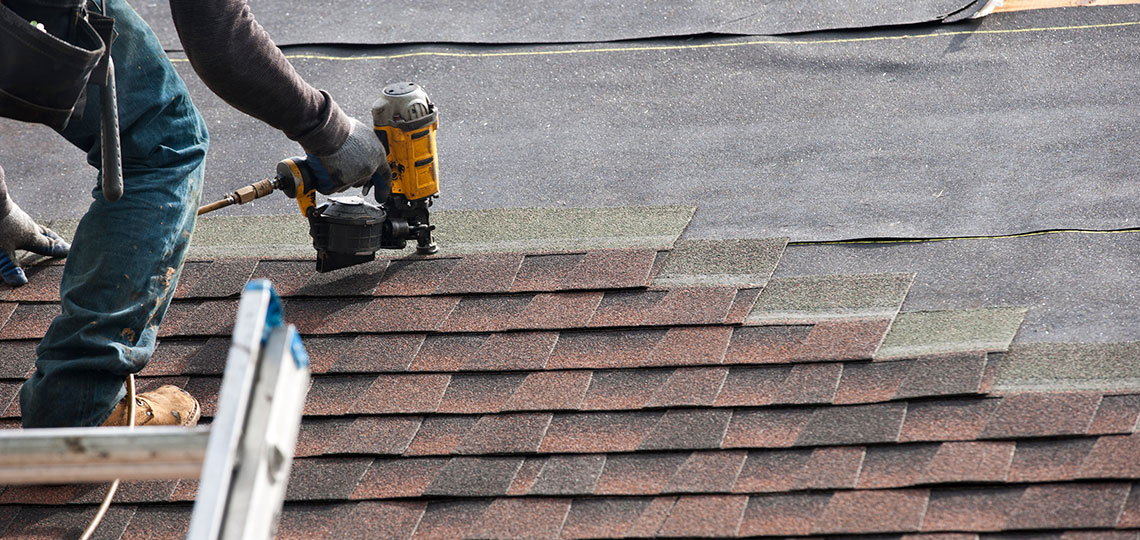Comparing Costs Among Roofing Companies in Gainesville Florida
Comparing Costs Among Roofing Companies in Gainesville Florida
Blog Article
Best Practices for Ensuring Proper Roofing Ventilation
Ensuring correct roofing air flow is vital for the long life and efficiency of a roof. A well balanced intake and exhaust air vent proportion, generally 1:300, plays an essential role, with consumption vents ideally placed at the reduced edge of the roofing for trendy air entry and exhaust vents at the height for cozy air exit. Normal inspections to determine clogs and maintain clear air movement are vital. Keeping insulation away from vents is essential to avoid air flow limitation. Understanding these fundamental aspects sets the stage for more comprehensive insights right into installation and maintenance practices that can substantially boost your roofing system's performance.
Understand Air Flow Basics
Appropriately comprehending air flow fundamentals is essential for making certain the durability and effectiveness of roof systems. Reliable air flow reduces dampness build-up and temperature extremes in the attic room, both of which can bring about considerable structural damage with time. A well-ventilated roof covering assists in avoiding typical problems such as mold and mildew growth, timber rot, and ice dams, which can jeopardize the integrity of the roofing products and the underlying frameworks.
The key objective of air flow is to assist in the movement of air, allowing for a regular exchange in between the interior and outside settings. This equilibrium is achieved through a mix of consumption and exhaust vents that work with each other to keep optimal air flow. Consumption vents, normally situated along the soffits or eaves, allow fresh air to go into the attic room area, while exhaust vents, typically situated at or near the roofing system ridge, make it possible for hot, humid air to escape.
Trick variables influencing the efficiency of roof ventilation consist of appropriate positioning, appropriate sizing, and making sure that both consumption and exhaust vents are unobstructed. Routine assessment and upkeep are crucial to identify possible blockages, damages, or inefficiencies in the ventilation system, therefore securing the roof's efficiency and sturdiness.
Kinds Of Roof Vents
Roof covering vents play an essential function in keeping efficient attic room air flow and, by expansion, the general health of the roof. Various kinds of roof vents are readily available, each with one-of-a-kind benefits customized to details roof covering demands. Ridge vents, for example, are set up along the roofing system's top, permitting cozy, damp air to leave from the attic room. They provide continuous ventilation and mix flawlessly with the roofline, making them both effective and cosmetically pleasing.

Soffit vents are mounted under the eaves and operate in tandem with roof covering vents to make certain a balanced consumption and exhaust system. By allowing cooler air to get in from below, soffit vents promote the expulsion of hot air via upper vents. Gable vents, situated on the exterior wall surfaces of the attic room, offer another efficient service, specifically in homes with gable roofing systems.
Evaluate Your Existing Air Flow

Following, consider the age and problem of your roofing materials and air flow elements. Older systems might not follow existing building ordinance or might have deteriorated gradually, decreasing their effectiveness. Conduct a comprehensive assessment to recognize any kind of indications of wear and tear, such as rust, damages, or voids that could jeopardize the system's efficiency.
Furthermore, gauge the attic temperature level and moisture degrees. Heats and moisture can show poor ventilation - gainesville roofing companies. Use a hygrometer and thermostat to get precise analyses, contrasting them with outdoor conditions. Relentless discrepancies suggest prospective problems that need dealing with.
Setup Best Practices
Reliable installation of roofing ventilation systems is critical for guaranteeing optimal performance and long life. Proper installation starts with comprehending the particular air flow requirements of the building and the roofing it covers. This entails determining the proper proportion of consumption to exhaust vents, commonly adhering to the 1:300 regulation, which specifies one square foot of air flow for every single 300 square feet of attic room flooring space.

The placement of vents is just as critical. Consumption vents should be set up at the roofing system's lower side, commonly in the soffits, to enable trendy air to go into. check my source Exhaust vents, on the various other hand, ought to be set up near or at the roofing's peak to facilitate the departure of cozy, wet air. This develops an all-natural airflow that helps preserve temperature level and moisture balance within the attic area.
Seal all vent links meticulously to avoid air leaks and prospective water seepage. Usage high-grade materials and follow producer standards to ensure longevity and effectiveness. Furthermore, incorporating ridge vents with baffles can significantly improve airflow efficiency by stopping wind-driven rainfall and snow from getting in the attic room.
Ultimately, specific installment of roof covering ventilation systems alleviates possible concerns such as mold and mildew development, ice dams, and structural damage, making certain the roof covering's honesty and the structure's overall health and wellness.
Routine Upkeep Tips
Consistency in upkeep practices is fundamental to guaranteeing the long-term effectiveness of roof covering ventilation systems. During these inspections, make sure that vents are totally free of particles, nests, and other obstructions that might restrain airflow.
Use a soft brush or a vacuum to eliminate dirt and particles from intake and exhaust vents. Be cautious not to damage the air vent displays or louvers during the procedure.
Proper insulation is similarly important. Make certain that attic insulation does not obstruct the vents, as this can severely limit air movement. If any kind of insulation has actually changed or worked out, reposition or change it to preserve an efficient barrier.
Lastly, replace any type of damaged or missing parts promptly. Damaged vents, cracked tiles, or shabby blinking can all contribute to inadequate air flow and must be dealt with right away. Routine upkeep makes certain that the roof air flow system operates efficiently, therefore expanding the life expectancy of the roof covering itself.
Final Thought
Making certain correct roof covering air flow is paramount for maintaining the effectiveness and resilience of a roof. Adherence to the 1:300 consumption and exhaust air vent ratio, paired with the tactical positioning of vents, is vital. Normal semiannual evaluations, particles cleaning, and making certain insulation does not obstruct airflow are crucial practices. Applying these ideal methods will certainly foster a well-ventilated roof, thereby reducing prospective problems associated with moisture buildup and too much warmth, eventually extending the roofing's life expectancy.
A balanced intake and exhaust air vent proportion, generally 1:300, plays a pivotal role, with consumption vents ideally put at the reduced side of the roofing for awesome air access and exhaust vents at the top for cozy air departure. Intake vents, commonly located along the eaves or soffits, allow fresh air to go into the attic room, while exhaust vents, usually located at or near the roof ridge, make it possible for warm, damp air to get away.
Soffit vents are installed under the eaves and job in tandem with roofing vents to make certain a well balanced intake and exhaust system. By allowing cooler air to go into from below, soffit vents promote the expulsion of warm air through top vents. Adherence to the 1:300 intake and exhaust air vent proportion, coupled with the strategic placement of vents, is important.
Report this page